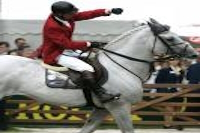Dressage
The official birth of the Dressage discipline dates back to 1532, when Federico Grisone, a Neapolitan nobleman, opened the first Riding School in Naples and his student Giovanni Battista Pignatelli continued the teaching by incorporating the experience of riders from the circus of Constantinople who they used more trim aids than spurs and heavy bits.
Two of his students Salomon de la Broue (1530-1618) and Antoine de Pluvinel (1555-1620) brought his method to France. Both felt the need to use a more sensitive approach to training, based on patience and respect.
The discipline thus continued to be developed and refined, always placing the horse's well-being before any exercise.
As for the actual competitions, they usually take place in a rectangle measuring 20x60 or 20x40. To facilitate the rider's orientation in performing the figures, the sides and the bisector of the short side of the rectangle are identified by letters, arranged as follows:
from the entrance (short side) the following letters are arranged clockwise: A-K-V-E-S-H-C-M-R-B-P-F. These are placed along the sides of the rectangle at a fixed distance from each other: Rectangle 20x60: A-corner 10m, corner-K 6m, K-V 12m, V-E 12m, E-S 12m, S-H 12m, H-corner 6m, Corner -C 10m, C-corner 10m, M-corner 6m, M-R 12m, R-B 12m, B-P 12m, P-V 12m, V-F 12m, F-corner 6m, A-corner 10m. Only the main A-K-E-H-C-M-B-F can be read outside the fence.
Inside, on the center line, there are: D-L-X-I-G. The figures are performed at the three gaits: walk, trot and canter, in the gathered, medium and extended variants.
